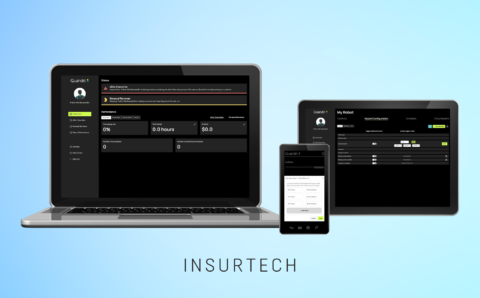
Budgeting for the project often becomes a core issue for many entrepreneurs with outstanding ideas who want to create their own tech products. This question is quite sophisticated and multifaceted, as there are a lot of aspects that impact software development costs. In these terms, for startups and small and medium-sized enterprises (SMEs) cost reduction is an even more relevant topic. They need to undergo survival and growth phases, gain competitive advantage, and stay flexible, which is complex when having a highly limited amount of financial resources.
A growing demand for reasonable cost allocation comes with the challenge of managing development costs effectively. Businesses often face certain hurdles, from financial constraints to dynamic project scopes, making finding strategies to cover and distribute expenses inalienable, and achieving the highest quality results. In fact, according to CIO World Asia, 54% of business decision-makers claimed IT cost optimization as the core obstacle in managing an IT estate.
Reading this article, you’ll discover key approaches and insights on how to reduce the cost of custom software development projects, offering techniques and solutions to help your business successfully overcome this process and accurately manage expenditures while delivering reliable and cutting-edge software solutions.
Table of Contents:
Proper Planning and Requirement Analysis
Having just a unique idea for a startup does not guarantee its triumph. One of the reasons why startups don’t become successful is the lack of investments. According to Failory, 16% of startups fail due to financial problems.
Therefore, you should plan your budget accurately and in detail. This ensures that you have sufficient funds to release a fully functional product, which may not be perfect in terms of feature richness but still able to generate revenue that can be reinvested. To simplify this process, businesses can use a software development cost calculator to estimate expenses based on project requirements, helping them allocate funds more effectively and avoid overspending. However, achieving this becomes impossible if the budget is squandered on polishing excessive or insignificant features or design elements.
Importance of clear project scope and objectives
A well-defined project scope and clear objectives are reliable ways to form and decrease custom software development cost. The initial action is precisely outlining the project’s boundaries and goals from the outset, which in turn allows your team to avoid excessive deviations and contribute their efforts to ensure efficient results faster.
Conducting Thorough Requirement Analysis to Avoid Scope Creep
Scope creep, the gradual expansion of project requirements surpassing the initially set roadmap, is often a factor in cost overruns and delivery setbacks. The best way to avoid this issue is to complete an in-depth requirement analysis, which covers identifying and documenting all project needs comprehensively, minimizing the risk of scope creep, and ensuring that you have a sufficient amount of resources, allocating them efficiently.
Involving Stakeholders in Early Discussions to Align Expectations
Engaging stakeholders in the primary steps of project development helps ensure alignment and prevents miscommunication that can result in expensive rework further in the process. Full understanding and connection with your key stakeholders from the outset clarifies expectations, helps gather valuable insights, and makes informed decisions that positively impact development and mitigate unnecessary outgoings.
Choose the Right Development Methodology
Software development methodology is a framework or flow used to structure, plan, and manage the process of implementing a tech product. There are several options, and each of them comprises a set of practices, principles, and procedures that direct the team through the software development lifecycle, from initial conception to deployment and ongoing support. The correctly chosen methodology can help companies reduce software development costs, cater to project scope changes, efficiently allocate resources, and boost time-to-market, ultimately affecting budgetary needs.
Agile vs. Waterfall: Pros and Cons
Agile and Waterfall represent two popular and drastically different approaches, each with its own set of advantages and limitations.
Agile methodology introduces flexibility, collaboration, and iterative development. Its iterative concept allows for frequent feedback and adaptation, allowing teams to respond seamlessly to modifications in requirements. Still, Agile may require a significant upfront investment in training and infrastructure, and it should be managed efficiently to avoid potential scope creep.
As McKinsey report claims,” According to our own observations, the companies that are deploying Agile at scale have accelerated their innovation by up to 80 percent.”
| Pros | Cons |
| Facilitates flexibility and adaptability | Requires active involvement and commitment from all team members |
| Ensures frequent iterations and feedback | May result in scope creep if not managed properly |
| Elevates collaboration and communication | Requires experienced team members and professional leadership |
| Prioritizes customer satisfaction | Can be challenging to estimate timelines and budgets accurately |
| Enables early delivery of working software | Continuous alterings may lead to increased project complexity |
Waterfall methodology, in contrast, sticks to a consistent, linear flow with distinct phases such as requirements, design, implementation, testing, and maintenance. Waterfall provides clear project milestones and documentation, but its rigid structure may interfere with responsiveness to evolving needs, bringing in higher costs related to late-stage alterations.
| Pros | Cons |
| Transparent and well-defined project stages | Limited flexibility to address changes |
| Straightforward project management | Customer feedback is not considered until late stages |
| Well-suited for projects with stable requirements | High risk of discovering issues late in the flow |
| Easy and accurate to estimate timelines and budgets | Long delivery times, leading to delayed feedback and longer time-to-market |
| Provides a structured approach for large-scale projects | Limited opportunity for course correction during development |
Waterfall is a great option for projects with strict regulations or requirements, as the deliverables of each step guarantee that the requirements are met. Agile is a more flexible approach suited for projects that plan on fast development, have dynamic requirements, and don’t cover an absolutely precise look at the final result. Agile is adjustable and requires a cohesive and engaged team, combined with timely check-ins with stakeholders regarding the progress.
| Aspect | Agile | Waterfall |
| Project structure | Iterative and incremental | Linear and sequential |
| Flexibility | Highly flexible, adaptable to changes | Limited flexibility, changes are difficult to address |
| Feedback | Focuses on regular feedback and iterations | Feedback is typically gathered late in the process |
| Project scope | Scope can change throughout the flow | Scope is defined from the outset and remains largely unchanged |
| Risk management | Risks are addressed continuously within the project | Risks are addressed in the initial planning stage |
| Delivery timeframe | Shorter delivery times due to frequent iterations | Longer delivery times, with all stages completed sequentially |
| Customer engagement | High level of customer involvement | Customer involvement is typically limited to the beginning and end |
| Adaptability to changes | Can easily cater to changes during development | Changes are difficult to implement once the flow has begun |
| Documentation | Emphasizes working software over comprehensive documentation | Requires extensive upfront documentation |
Iterative Development to Allow for Changes and Adjustments
Iterative development within any chosen methodology is beneficial because it incorporates feedback, enhances features, and makes adjustments throughout the software development lifecycle. You also reduce the risk of rework by addressing issues early and ensuring that the final product aligns closely with stakeholder expectations.
Continuous Integration and Deployment to Streamline Processes
Ongoing integration and deployment practices can help you enhance project development efficiency and reduce overheads by automating the build, testing, and deployment activities. This allows you to minimize manual errors, accelerate time to market, and facilitate accelerated iteration, ultimately driving down development costs while maintaining product quality.
Unlock the Potential of a Dedicated Team
Discover the transformative benefits of hiring dedicated developers. Learn how they can elevate your project’s success and your bottom line.
Optimize Development Team Structure
Many global businesses, on a constant quest to optimize their team, choose to outsource their efforts, ordering offshore custom software development services as a cost-efficient and reliable strategy to ensure high-quality results at great value for money. Besides, in Q4 of 2022, Resume Builder indicated that 40% of companies are hiring contractors to replace laid-off workers, and 53% adopted full-time workers to contract terms.
Hiring Full-Time vs. Contract Developers
Choosing between full-time employees and contract developers depends on project objectives, budget constraints, and long-term strategic goals. Full-time developers offer continuity, deep integration into the team, and commitment to the company’s global mission. Still, you can achieve the same results by hiring contract developers, providing flexibility in scaling the team according to project needs, decreasing overhead expenses, and filling specialized expertise for short-term projects or specific tasks.
Outsourcing or Offshoring Non-Core Tasks
Outsourcing or offshoring tech tasks is a highly beneficial way to save costs by employing external resources while your team focuses on strategic business activities. For instance, QA testing, UI/UX design, or backend development can be outsourced to professional tech-savvy vendors or offshore teams, fully eliminating on-premise operational expenses and accelerating project deployment. Bringing in enormous value to businesses, the IT outsourcing market is forecasted to reach $512.50 billion by the end of 2024, with an annual growth rate (CAGR 2024-2028) of 10.99%, as Statista claims. This growth trend is expected to culminate in a market volume of $777.70 billion by 2028. According to Deloitte, 57% of executives state the primary reason outsourcing is cost reduction, for routine tasks in both business operations and IT. To succeed in your cooperation, you should carefully choose a credible IT provider, checking alignment with quality standards and communication protocols.
Training and Upskilling Existing Team Members
Ongoing success requires training and upskilling your existing team members. This provides talent development and retention, enhances team morale, and takes productivity to the next level. By delivering opportunities for professional growth and acquiring new skills, you empower your professional ecosystem to seamlessly handle complex challenges, providing a culture of continuous improvement within the team. While investing in training and upskilling may require extra costs from the start, the long-term economic benefits outweigh these expenses, as you strengthen the expertise of your team with new knowledge, enhance the services’ quality, and innovation, obtaining increased profitability for your business.
Utilize Open-Source and Existing Solutions
The practice of leveraging freely available software and pre-existing solutions and building everything from scratch is an integral part of software development. Using these approaches efficiently, you can reduce software development costs, time, resources, and effort by incorporating proven technologies and components into your project.
Benefits of Leveraging Open-Source Software and Libraries
Open-source software and libraries significantly reduce software development costs by eliminating the need to build functionalities from scratch. Furthermore, open-source solutions are traditionally freely available, cutting down on licensing fees and procurement expenses. The vast community often surrounds open-source projects, providing innovation and collaboration, as well as access to rich expertise, resources, and support. Open-source software also tends to undergo all-around peer review, ensuring their reliability, security, and quality as a whole.
Avoiding Reinventing the Wheel
Being equipped with existing solutions, developers can avoid reinventing the wheel and instead put more effort into implementing more sophisticated features or handling specific business challenges. Following this approach, you can achieve accelerated development milestones, cut down the risk of failures, and interoperability with established standards and frameworks.
Customizing Existing Solutions to Fit Specific Needs
Customizing your existing solutions to fit specific needs offers a strategic advantage in optimizing software functionality and aligning with your business objectives and processes. In other words, customization allows you to tailor the software to your precise requirements and workflows. Bespoke development offers unlimited opportunities in functionality, integrating with existing systems, or adjusting user interfaces. Customization helps derive maximum value from existing solutions while ensuring alignment with your outstanding goals and operation concepts.
Implement Robust Quality Assurance (QA) Practices
Quality Assurance (QA) is a critical phase that enhances your product quality before deployment and during maintenance and support. In 2019, a survey conducted among CIOs and senior technology professionals detected that about 23% of their organization’s yearly IT budget was typically allocated for QA and testing.
Importance of Early and Continuous Testing
Early and continuous testing is essential for detecting and eliminating defects at the earliest stages of development, preventing further work, and ensuring the timely delivery of high-quality products. Testing should be incorporated into every development lifecycle phase so your team can identify issues as soon as they arise, validate reliably performing functionality, and maintain product stability throughout the development lifecycle.
Automated Testing to Reduce Manual Efforts
Automated testing offers numerous benefits in terms of cost optimization in software development, ensuring increased test coverage, faster execution times, and less reliance on manual efforts. Robotization of repetitive and time-consuming test cases can streamline the testing process, enhance efficiency, and free up resources to concentrate on more complex and critical testing scenarios. Moreover, automated testing guarantees consistency and repeatability, helping teams detect regressions quickly and maintain product quality across multiple releases.
Regular Code Reviews and Peer Testing
Regular code reviews and peer testing are vital for productive collaboration, knowledge sharing, and code quality improvement within your development team. Developers adopt this technique to identify potential issues, adhere to coding standards, and meet the best practices. Peer testing enhances accountability and provides valuable insights, as well as a concept of continuous improvement. Communication and collaboration among technicians are also elevated, producing failure-resistant and reliable software more efficiently.
Embrace DevOps Practices
Companies that can meet customer demands faster have a competitive edge, gain market relevance, and achieve high Returns on Investments (ROI). A Harvard Business Review Analytic Services survey found that a prevalent part (86%) of 654 respondents strive to swiftly develop and deploy new software, with many leveraging DevOps to achieve this goal.
Streamlining Development and Operations for Faster Deployments
DevOps practices imply principles and methodologies catering to enhanced collaboration, communication, and integration between software development (Dev) and IT operations (Ops) teams. These practices emphasize automation, continuous delivery, and rapid iteration to enable organizations to deliver high-quality software more efficiently and reliably. DevOps speeds up the delivery process, minimizes errors, and shortens time-to-market by breaking down silos and enhancing communication across different teams, leading to cost optimization in software development.
Infrastructure as Code to Manage and Provision Resources Efficiently
Infrastructure as Code (IaC) is a methodology where infrastructure provisioning and management are handled via code and automation, allowing for the creation, modification, and maintenance of IT infrastructure using scripts or configuration files rather than manual procedures. Thus, teams can automate the management of infrastructure resources using code-based configurations. This means you can gain greater consistency, scalability, and cost efficiency by treating infrastructure as software. IaC liquidates manual involvement, liquidates deployment errors, and facilitates faster resource provisioning, all of which facilitate streamlined development processes and cut down operational expenses.
Monitoring and Logging to Identify and Fix Issues Proactively
Continuous monitoring and logging are essential components of DevOps practices. They enable teams to gain real-time insights into system performance and identify potential issues before their escalation. Comprehensive tracking of key metrics and logging relevant data are key strategies to detect anomalies, address problems efficiently, and implement preventive measures, thereby minimizing downtime, enhancing stability in operation, and reducing software development and maintenance costs.
Focus on Scalability and Performance
Insights from McKinsey found that a lack of scalable software solutions could cost businesses approximately between 8% and 28% in revenue losses. To make maximum use of software value streams, you should take care of scalability from the start of your project.
Designing Scalable Architectures from the Start
Scalability in software architecture is essential for effectively handling future growth and ensuring optimal performance under dynamic workloads. Scalable design principles such as modularization, microservices, and distributed computing help build flexible architectures capable of addressing ever-changing demands with stable performance and avoiding significant redevelopment costs.
Performance Testing to Identify Bottlenecks Early
Comprehensive performance testing throughout the development lifecycle is efficient in identifying potential faults and optimization opportunities before they impact user experience or system reliability. This practice implies simulating real ecosystem conditions and stress-testing various components. Thus, teams can efficiently address performance issues, adjust system parameters, and optimize resource distribution, taking scalability and user satisfaction to the next level.
Opting for Cloud-Based Solutions for Flexibility and Cost-Efficiency
Cloud-based infrastructure has come in handy for many businesses, offering inherent scalability, elasticity, and cost-efficiency compared to on-premises one. Cloud computing services provide on-demand access to resources, allowing teams to scale infrastructure dynamically, reflecting varying workload demands without upfront investment in hardware or provisioning delays. Another benefit of cloud services is that they offer a wide range of managed databases, caching, and content delivery solutions, further caring about scalability and performance optimization efforts while cutting down operational costs.
Maintain Clear Communication
Miscommunication and misunderstanding across the parties engaged in your project development can ensure costly consequences due to unmet milestones, inefficiency, and less productivity. The analysis from leadership consultancy Fierce, Inc. found that 86% of employees claim a lack of collaboration or ineffective communication as the main source of workplace failures. Furthermore, HR Magazine states that about 46% of the workforce reported regularly receiving unclear or confusing instructions, resulting in an estimated loss of 40 minutes of productivity each day as they attempted to interpret them.
Regular Updates and Status Meetings with Stakeholders
Frequent communication with stakeholders is essential for keeping them up to date with project progress, handling concerns, and ensuring alignment with the set goals. You can adopt regular updates and status meetings to provide opportunities to discuss progress, share insights, and provide feedback, achieving transparency and trust among all engaged parties.
Open Channels for Feedback and Concerns
Set open channels for feedback and concerns, encouraging stakeholders to voice their thoughts. This helps your team address issues faster and collaborate cohesively towards project success. There is a rich choice of communication means and progress-tracking platforms, like corporate messaging apps, project management tools, or dedicated feedback sessions. These solutions can create a culture of open communication, guarantee complete mutual understanding, and facilitate timely resolution of challenges.
Setting Up a Transparent Billing and Invoicing System
Transparency in billing and invoicing maintains trust and accountability in software development projects. You can enhance clarity and avoid disputes over billing discrepancies by implementing a clear and transparent billing system detailing the breakdown of costs, hours worked, and expenses incurred. Detailed and accurate billing establishes confidence in stakeholders, demonstrating the development team’s integrity and professionalism while providing efficient financial management and budget tracking.
Continuous Learning and Improvement
As Forbes claims, “Employers are placing a premium on candidates committed to professional development, continuous learning, and upskilling. And it’s not just a matter of what recruiters want, it’s what they need for their companies to thrive in an unpredictable economy.” By obtaining new knowledge and skills, your team can enhance innovativeness, elaborate processes, and adopt more efficient tools and practices over time, as well as fill the missing expertise.
Encouraging a Culture of Continuous Improvement
Continuous skill improvement is essential for software development teams to stay relevant in a time of constant tech progress. Ensure open communication, detailed feedback, and recognition of both successes and failures while offering learning opportunities to create an environment where team members feel motivated to innovate and grow. It’s vital to develop resilience and agility by setting a mindset of ongoing learning and adaptation, enabling your employees to respond effectively to changing market demands and arising challenges.
Learning from Past Projects and Mistakes
Reflecting on past projects and mistakes can also help you drive improvement and elaboration in the team. An after-the-fact assessment is an effective way to identify what went well and areas for improvement by learning from experience. By documenting insights gained and implementing corrective actions, teams can avoid repeating past errors and refine their processes to deliver higher-quality software more efficiently and decrease your project investments in parallel.
Staying Updated with Industry Trends and Technologies
Stay informed of industry trends and the newest technologies to remain sought-after in your niche and establish yourself as a trustworthy and innovative market player. To do so, you and your team members can attend conferences, participate in training programs, and engage with online communities. This allows you to integrate tools, methodologies, and best practices so teams can leverage the latest advancements to enhance their workflows, deliver cutting-edge solutions, and drive ongoing business success.
Opt for Offshoring
Offshoring software development outsourcing offers a broad range of cost-reduction benefits for businesses. Following this model, you access a global talent pool with diverse skill sets at less labor costs than hiring on-site. Offshore teams often perform in regions with lower living expenses and taxes, allowing you, as a business, to use significant cost savings in software development on salaries and operational expenses. Besides, offshoring eliminates the need to invest in infrastructure and overheads associated with supplying an in-house team with all facilities, such as office space and equipment. Different time zones are also a benefit, as they allow you to expedite project timelines by leveraging different time zones, providing round-the-clock development, and accelerating time-to-market.
Choose professional IT outsourcing agencies
Outsourcing is a key strategy for streamlining costs for a range of modern businesses. 92% of G2000 companies outsource IT, and 37% of small businesses outsource some of their operations, according to Entrepreneur. Selecting professional IT outsourcing agencies can reduce development time and avoid continuous problem-solving throughout the project lifecycle, providing cost efficiency.
Beyond Borders: Expand Your Team’s Reach
Leverage global talent with our offshore development services. Access skilled professionals, streamline costs, and accelerate innovation.
In addition, opting for agencies specialized in the technology stack relevant to your project ensures a more profound comprehension of your requirements and smoother implementation. For instance, if you are seeking a reliable Python development vendor, you should reach out to vendors specializing in this technology. This alignment allows you to employ their specialized skills and knowledge while optimizing a Python web development cost.

MusicTeam
MusicTeam launched v1 with our help, simplifying metadata management for artists and securing a government grant to support cultural projects.

Robot Factory
We created Robot Factory to automate insurance processes, offering a user-friendly platform that boosts efficiency and saves significant time.

Restaurant Management
Created an advanced restaurant management system, integrating data into a central dashboard for better efficiency, forecasting & profitability.
Conclusion
Reducing software development costs requires an all-around strategic approach that balances efficiency with quality. These key strategies can help your business achieve significant cost efficiency while obtaining flawless and fully-fledged software that will be appreciated on the market.
It’s critical for businesses to effectively balance between cost considerations and the need for robust, reliable software. Moreover, adopting a solid approach to cost management ensures you have long-term financial sustainability and competitiveness in the dynamic software market. These IT cost optimization strategies are guaranteed to optimize your software development efforts, bring in innovation, and achieve tangible cost reductions with flawless quality.

